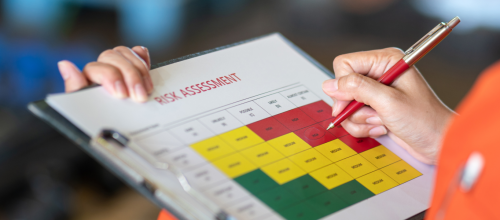Every organisation faces risk — from political unrest and cyber threats to natural disasters and medical emergencies. The difference between being caught off guard and staying in control comes down to foresight.
Risk mapping makes that foresight visible. It turns data, local intelligence, and experience into a clear picture of where your vulnerabilities lie — and how to act before they escalate.
Risk mapping is the process of identifying, assessing, and visualising potential threats that could affect your people, assets, or operations.
It gives leaders something powerful: clarity. You can see where your organisation is most exposed, prioritise resources, and make informed decisions based on evidence, not instinct.
A well-structured risk map transforms chaos into order — revealing patterns, hotspots, and opportunities to strengthen resilience before a crisis unfolds.
Your duty of care doesn’t end when an employee boards a flight or lands in another country. Risk mapping helps you protect staff wherever they are by showing where health, safety, and security threats intersect.
For example, before sending a team abroad, you can map:
Local healthcare capacity and disease outbreaks
Areas of political tension or civil unrest
Natural disaster zones and transport vulnerabilities
Paired with platforms like Aurora and emergency communication tools such as SIREN, this approach ensures your people are supported — not just monitored.

Every risk map begins with knowledge. Look at everything that could disrupt your operations — from local crime and infrastructure gaps to extreme weather or geopolitical shifts. Combining public data with intelligence feeds gives you a reliable base layer.

Once you’ve identified threats, assess both their likelihood and impact. A minor travel delay doesn’t carry the same weight as a regional conflict or cyberattack. Prioritising this way ensures your time and investment go where they make the most difference.

Data alone can overwhelm. By displaying it clearly — whether on a map, dashboard, or matrix — you make it accessible to decision-makers. Visuals reveal patterns your teams might otherwise miss.

A map only has value if it drives response. Build out mitigations using secure transport, telemedicine, and real-time incident alerts through Aurora and SIREN. This is how risk mapping moves from theory to protection.

Risk maps come in many forms — from strategic-level heat maps for board decisions, to operational maps for daily monitoring, to project-based maps tracking risk in new ventures. The best approach is combining all three for a complete picture. At NGS we can deliver it all straight into your inbox.
Modern risk mapping isn’t static. With live data streams, you can see risks evolve as they happen.
Digital platforms such as Aurora allow you to overlay personnel locations, regional intelligence, and emergency updates in real time. That means:
Immediate alerts when incidents occur nearby
Clear visibility of who might be affected
Faster, more coordinated response decisions
When your map updates itself, your resilience scales automatically.
If your organisation is aligning with ISO 31030, risk mapping is no longer optional — it’s a core requirement. The standard calls for structured assessment of threats before, during, and after travel.
By embedding mapping into your Security & Travel Risk Management (STRM) process, you show clear commitment to traveller safety and legal compliance. More importantly, you give your teams the confidence to operate anywhere.
Even strong programmes fail when risk mapping is treated as a one-off project. Keep it alive. Avoid common pitfalls such as:
Relying on outdated or generic data
Ignoring “low-likelihood” events with high potential impact
Forgetting to review and update maps after each deployment
Creating maps that sit on a shelf rather than guide decisions
The most resilient organisations treat their risk map as a living tool — updated, tested, and discussed often.
A risk map isn’t just a visual. It’s your organisation’s shared understanding of where danger meets duty — and how to stay one step ahead.
When combined with NGS tools like Aurora, SIREN, and global medical and security networks, risk mapping becomes a daily advantage: a way to see clearly, act decisively, and protect confidently.